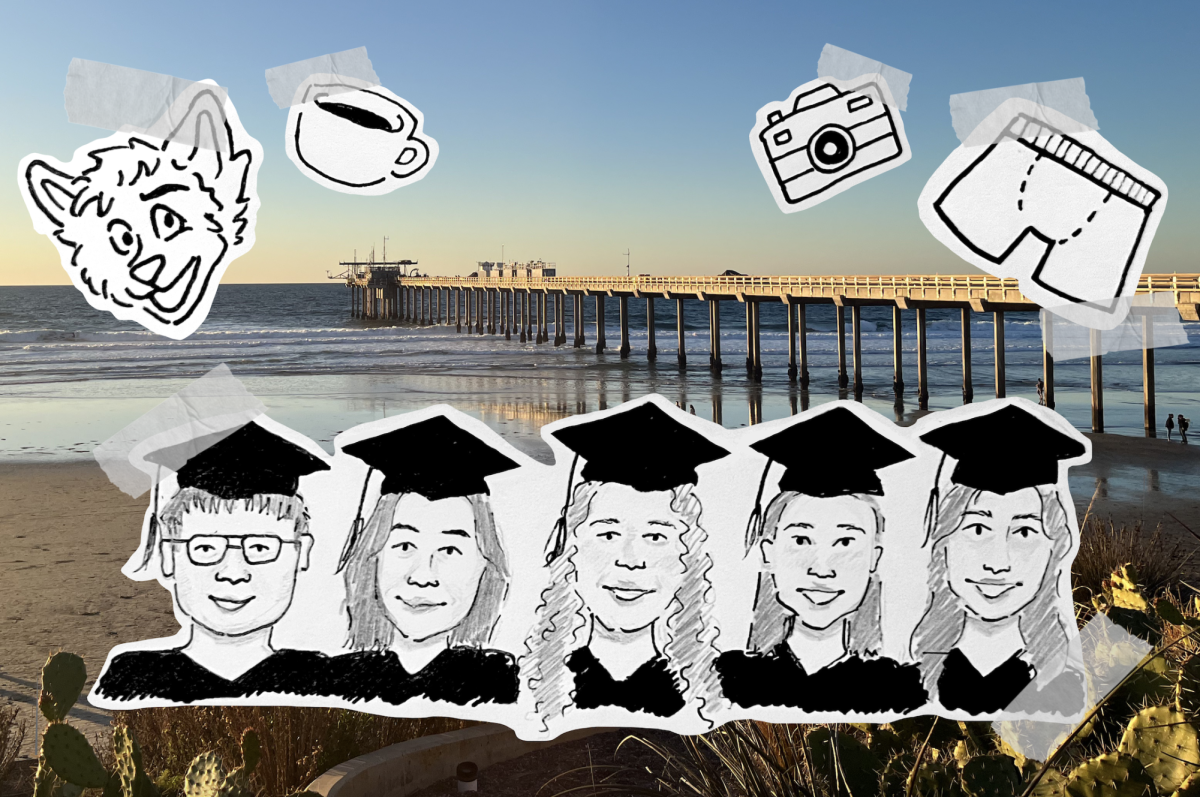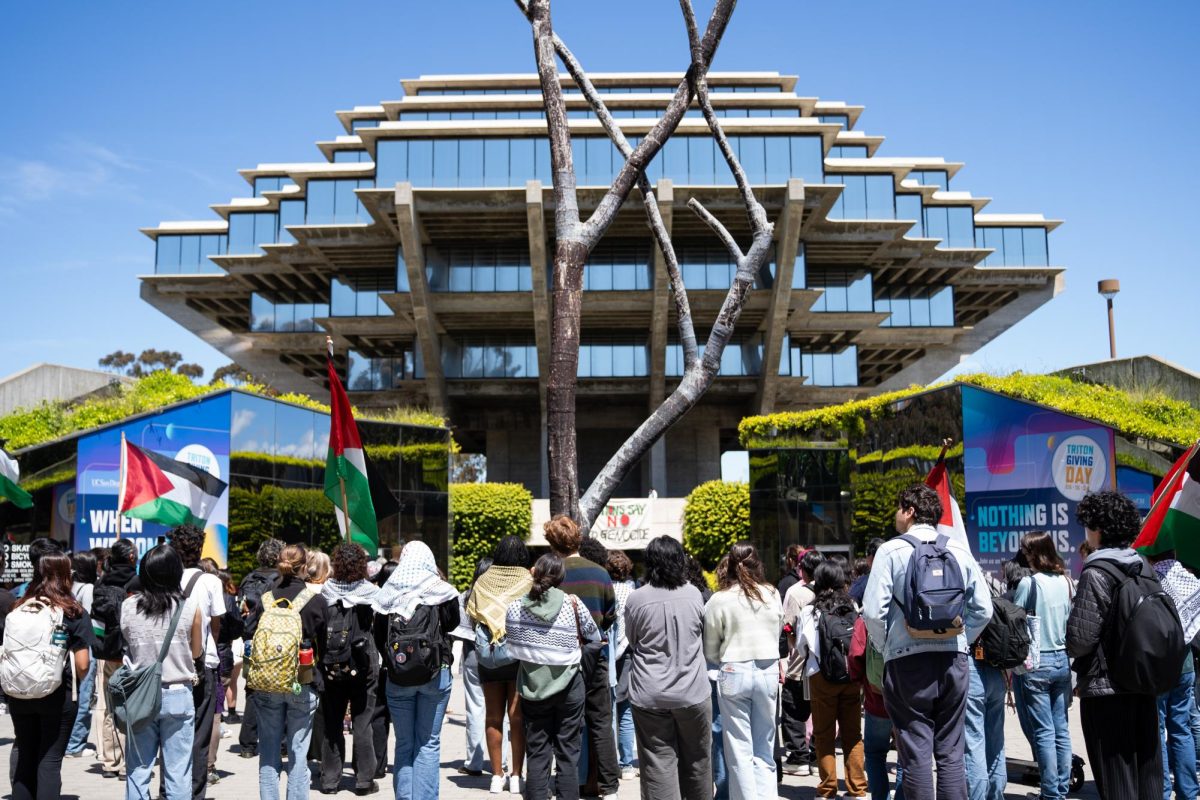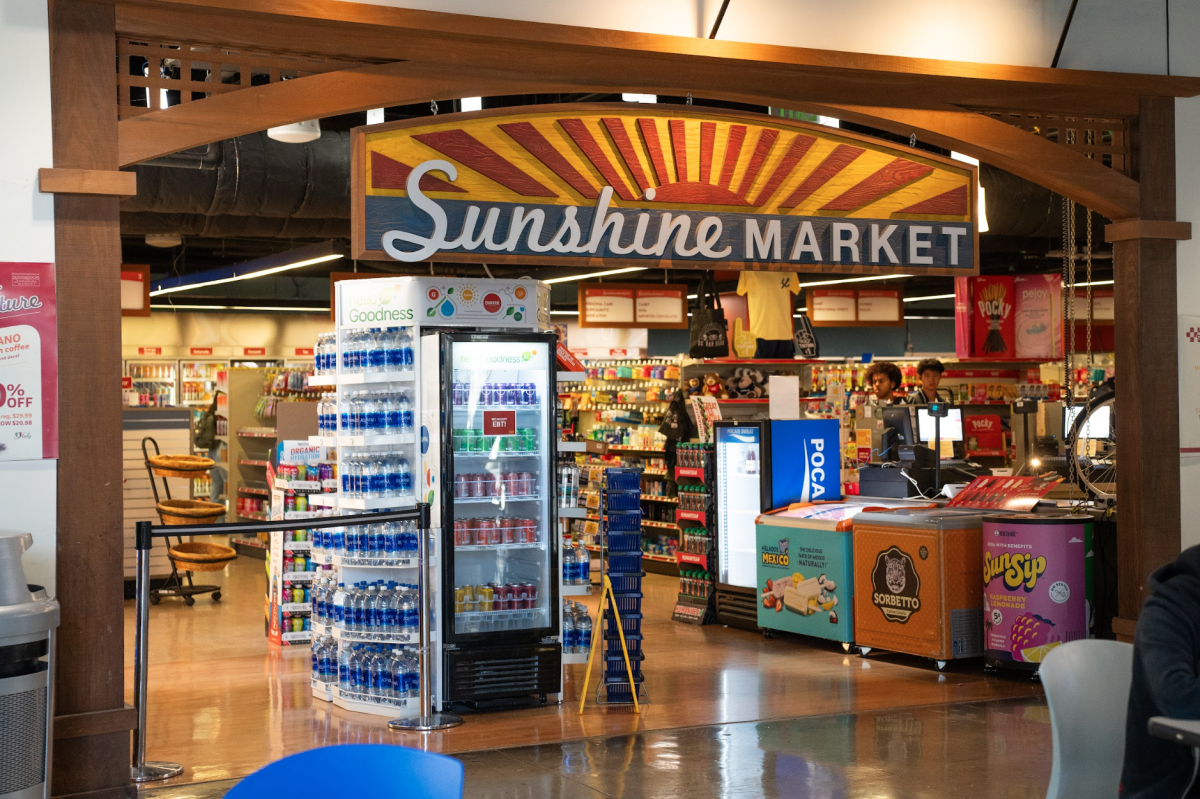By Jennifer Hare
Addictions run the gamut, but for Ron Carlson, director of UCSD’s Crafts Center, glass-blowing is the ticket.
“”It’s like heroin,”” he said. “”I don’t care how much it costs and I can’t stop.””
Unlike many others, an art addiction provides the context for real personal growth, and the Crafts Center offers a unique environment where you can foster one. Nestled between Bonner Hall and The Hump on the far south boundary of John Muir College lies this lesser-known campus jewel.
It may come as a surprise that the Crafts Center preceded Student Center, now a main artery of student exchange. In 1972, architect Chuck Powers assembled four storage sheds that were later transformed into a darkroom, a kiln room, a ceramics studio and office space. Not long after the building was assembled, an anonymous donor relinquished his pottery wheel and kiln to the university; the Crafts Center was quickly inundated with ceramics-lovers, and to this day ceramics remains its most popular discipline.
As its student following grew, so did the Crafts Center’s course offerings.
“”We tried to expand programs as student needs arose,”” Carlson said.
Today the center boasts twenty distinct disciplines ‹ including photography, ceramics, glass-blowing, neon, jewelry and graphics ‹ and close to 80 courses that cater to roughly 500 students every quarter. The high-caliber teaching staff consists of 46 permanent instructors, who, according to Carlson, are not just dabblers, but practicing professionals with either a degree in their field or 10-plus years of teaching experience. In addition, visiting artists teach frequent workshops. Upcoming workshops for this year give students the opportunity to explore soap making, basket weaving, jewelry wire working, glass fusing, mosaic art and candle making.
“”People don’t realize the vast resources we have here,”” Carlson said. “”I would venture to guess that we have more course offerings and disciplines than any other non-accredited craft center in the country.””
This claim should not be taken lightly, as Carlson has traveled across the nation to visit other university craft centers to glean techniques and ideas from them.
Patricia Yockey, a ceramics and glass-blowing instructor, not only teaches 28 hours a week but produces 12 pieces per month to supply galleries in California, Michigan and Montana. Local galleries that show her work include Joseph David Gallery, Chet Wooding Graphics of San Diego, Art Glass Guild @ Studio 25 in Spanish Village and Indulge Gallery in Solana Beach.
“”I like the intensity of glass work,”” Yockey said of her latest artistic endeavor. “”It brings a very much immediate, instant gratification but also demands attention to detail, heat resistance and intense concentration.””
Despite her busy lifestyle, teaching is an incomparable blessing to her and she urges students to pursue art with a passion.
“”You get back the greatest satisfaction when you can see that little spark of excitement in a student when you expose them to something that is new and different,”” Yockey said. “”As a student, you have leisure time, time to explore. You get so much more out of these classes than what it costs to enroll.””
According to Yockey, the instructors are flexible in their devotion to students’ progress. Have to cram for a midterm and miss a class? Don’t worry ‹ make up the class on your own time. It is precisely this flexible structure that allows for a personal journey and an advancement into the artistic realm at one’s own pace. Because the classes are not accredited, the pressure of “”making the grade”” is relieved, allowing the chance for exploration that’s harder to find through UCSD’s visual arts department.
“”When you come here you learn real skills, and you take them with you when you leave,”” Carlson said, pointing out that the Crafts Center emphasizes kinesthetic learning and applicable skills for more than art theory.
“”Taking studio classes through UCSD’s visual arts department fills me in on the conceptual side of art,”” Earl Warren College senior Nick Jones said. Jones, a studio arts major, can attest to both worlds. “”But they’re hit-or-miss if you want real technical instruction. The Crafts Center has different objectives: they’re there to teach you how to use materials. I feel I need both to consider myself a well-rounded artist.””
Classes are not only available to UCSD students, but to faculty and local residents as well. Revelle College senior Mary Ragsdale considers the Crafts Center her “”second home on campus,”” and feels the situation offers a diverse social mix. After taking an initial jewelry class her freshman year, Ragsdale was hooked and went on to take classes in painting, guitar, nude drawing, photography and neon.
“”It’s inspiring to be learning from practicing artists,”” she said. “”All the people I’ve met here have been coming for years. If you like it and you get stuck, then you’re stuck for life. It’s great. And how many places can you do neon sign-making? It’s just the coolest thing!””
Also associated with the Crafts Center is Grove Caffe, a student-operated business that provides much-needed funding for the Crafts Center. In 1985, Associated Students gave $10,000 of seed money to an entrepreneurial student named Brad Silon. It was out of Carlson’s floor space and Silon’s funding that Grove Caffe was born. Not only was the Grove the first cafe that produced “”real””coffee on campus, but it is entirely student-run.
The Grove Gallery, jointly owned by the Crafts Center and Associated Students, provides ample opportunity for students and instructors alike to showcase their artwork. It hosts a faculty show once a year and alternating discipline shows all year long. The gallery’s shows are intended to tie in with local community events.
In addition, the Grove Gallery houses a holiday and spring sale during the first weeks of December and June, respectively. These sales offer ceramics, glass art, jewelry and a large selection of fine wares crafted by students and instructors alike. While 25 percent of the proceeds go directly to the Crafts Center, students and artists pocket the rest. Previews for the upcoming December sale are on Dec. 1 from 3 p.m. to 7 p.m. and offer a plethora of holiday gift ideas.
Things in life this wonderful hardly ever come free. The Crafts Center has to account for the cost of repairs and maintenance of materials in their budget structure, and Carlson admits that they had to raise fees this past quarter. However, courses are still offered to students at below-cost price.
“”It’s money well-spent because the reward of creation is such a positive affirmation. It’s worth every dollar you pay for,”” Ragsdale said. “”All the extra materials you receive and the personalized attention you get from the instructors far overcompensates for the cost of the class.””
Carlson said he cannot stress enough how invaluable the art process is to students at the university level. Citing one particular example, he told of a former medical student from years back who visited him with tears in his eyes and said, “”The only reason I made it through was because the ceramics studio was open 24 hours a day. The pottery wheel was my therapy.””
Jones also found that the chance for art-exploration yields innumerable rewards and urged students to take advantage of the Crafts Center’s resources.
“”As a student, I have the luxury of figuring out what I like to do. Don’t let an opportunity like this pass you by,”” Jones said.
To offer an incentive to new and curious students, the Crafts Center recently instituted a series of free introductory courses given the first week of every quarter. If you have ever wondered what it’s like to fill neon tubing, torch a glass rod or man a floor loom, consider taking this free offer to satiate your curiosity. Maybe your artistic zeal won’t compare to Carlson’s “”addiction,”” but you might just find a new part of yourself you never knew existed.







